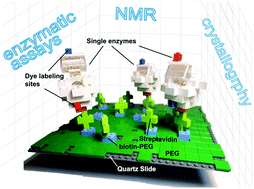Seeing the forest for the trees: fluorescence studies of single enzymes in the context of ensemble experiments
Abstract
Enzymes are remarkable molecular machines that make many difficult biochemical reactions possible under mild biological conditions with incredible precision and efficiency. Our understanding of the working principles of enzymes, however, has not reached the level where one can readily deduce the mechanism and the catalytic rates from an enzyme's structure. Resolving the dynamics that relate the three-dimensional structure of an enzyme to its function has been identified as a key issue. While still challenging to implement, single-molecule techniques have emerged as one of the most useful methods for studying enzymes. We review enzymes studied using single-molecule fluorescent methods but placing them in the context of results from other complementary experimental work done on bulk samples. This review primarily covers three enzyme systems—flavoenzymes, dehydrofolate reductase, and adenylate kinase—with additional enzymes mentioned where appropriate. When the single-molecule experiments are discussed together with other methods aiming at the same scientific question, the weakness, strength, and unique contributions become clear.

- This article is part of the themed collections: Single-molecule optical studies of soft and complex matter and Biophysics and biophysical chemistry in PCCP

 Please wait while we load your content...
Please wait while we load your content...